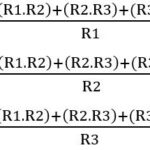In the context of 5G, RAT stands for Radio Access Technology, which is a crucial aspect of mobile communication networks. The RAT type in 5G refers to the underlying technology that enables the connection between user devices and the cellular network. 5G introduces several RAT types, each designed to cater to specific needs and scenarios.
The primary RAT types in 5G include:
- NR (New Radio): NR is the foundational RAT type for 5G. It encompasses both the non-standalone (NSA) and standalone (SA) architectures. In NSA, 5G NR is supported by existing 4G LTE infrastructure, while in SA, 5G operates independently of earlier generations.
- LTE (Long-Term Evolution): LTE is not exclusive to 5G but is considered a transitional RAT type. In NSA deployments, LTE is used in conjunction with 5G NR to provide enhanced data rates and improved network capabilities.
- EPS (Evolved Packet System): EPS is a comprehensive system that includes both LTE and 5G NR. It facilitates the seamless integration of 5G into existing LTE networks, ensuring a smooth transition and coexistence of both technologies.
- E-UTRA-NR Dual Connectivity (EN-DC): This RAT type enables simultaneous connections to LTE and 5G NR, enhancing data rates and ensuring a smoother transition during the initial phases of 5G deployment.
These RAT types collectively contribute to the versatility of 5G networks, allowing for backward compatibility with previous generations while unlocking the full potential of 5G capabilities. The selection of a specific RAT type depends on factors such as network architecture, deployment strategy, and the compatibility of user devices with the available technologies.
